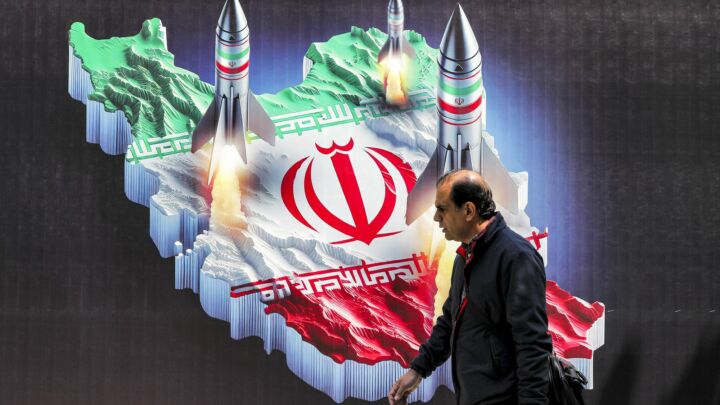NASA: ‘Risk is the price of progress’
A brilliant documentary on the Apollo missions reminds us that, yes, going to space is a risky business, but it's worth it.

In many respects the Apollo 13 mission of 1970 is to the American narrative what the Dunkirk evacuation of 1940 is to the British one: it is an incident in which a potential disaster was averted and subsequently transformed into a symbolic triumph.
Or at least, this is how patriots on both sides of the Atlantic are prone to perceive the two events. Those of a more sceptical persuasion see Dunkirk as proof of British military incompetence as a result of its government’s woeful lack of preparation for a war it should have seen coming earlier. Likewise, detractors regard the Apollo 13 fiasco almost as the moon programme’s proverbial Woodstock moment, when its naive optimism of the 1960s was (literally) brought down to Earth.
In another way, Apollo 13 was a kind of microcosm of the NASA story itself, one marked by supreme achievement, yet marred by calamity. It is a tale of extreme ambivalence; ambivalence which is reflected in those who have opinions on space travel. As James Woudhuysen wrote on spiked earlier this week, some consider space exploration as a dangerous, environmentally unsound, colossal waste of money, a hangover from the Cold War, and a metaphorical projection of phallocentric fantasies (1).
At the other end there are those who regard in awe the achievements of NASA and other space agencies, seeing their feats as astonishing accomplishments, while concomitantly lamenting the fact that we haven’t been to the moon since 1972. They perceive this to be indicative of humanity’s pessimism and timidity – a mood that has manifested itself and burgeoned in so many avenues of Western society since a sense of general gloom descended on us back in the 1970s, here on planet Earth.
Personally, I’m undecided. My head tells me that space exploration has been inordinately expensive, considering the returns humanity has invested in its pursuit. Although I understand it has had many useful by-products, I suspect the case here has been exaggerated (the oft-quoted example of Teflon was actually invented in 1938 and the first non-stick frying pan was produced in 1954). Still, my heart tells me going to the moon was a good thing to do, irrespective of its supposed political motivation. It is testament to human ambition and genius, while today’s anti-humanist naysayers are a reflection of that most unattractive foible: self-hatred, which is a perverse form of narcissistic self-obsession. Lots of people seem obsessed these days with the twentieth century’s bloody shortcomings, but few keep in mind that during this epoch it only took humanity 66 years first to learn how to fly and then to put a man on the Moon. That is to say, within a lifetime. This is simply astonishing.
BBC 2’s second and concluding episode of NASA: Triumph and Tragedy (Wednesday) did, as its title suggests, occupy itself with the mixed fortunes of the United States’ space programme (2). It began with the familiar tale of Apollo 13‘s abortive mission of April 1970, a story made even more famous by Ron Howard’s 1995 movie of the same name. This had the unfortunate effect of making it all a bit too familiar. The electrical fault, the damaged oxygen tanks, the shutting down of the command module, loss of power and cabin heat, the build-up of carbon dioxide: anyone with a cursory interest in space exploration and/or films will be familiar with these events.
But it doesn’t mean the story wasn’t worth retelling. Unlike Dunkirk, however, the rescue of which was the unhappy consequence of hubris among British politicians who believed for far too long that they could ‘deal with Hitler’, the Apollo 13 salvage mission was necessitated by simple human error – a fault in Apollo 13‘s oxygen tanks. Contrarily, Apollo 13 was delivered safely back to Earth thanks to amazing human ingenuity.
NASA hadn’t been so lucky beforehand. In January 1967, three astronauts were killed when the Apollo 1 command module caught fire in a training exercise. And as the BBC programme reminded us, NASA missions would meet with further misfortune even when it had given up on going to the moon: namely the Challenger and Columbia space shuttles, which respectively exploded shortly after lift-off in 1986 and upon re-entry in 2003. Although I was still at primary school when the Challenger disaster occurred, I did take a keen interest in it, and I don’t remember anyone then calling for the abandonment of manned space flight altogether. Perhaps I was too young to notice. In any case, I certainly do remember clearly the Columbia tragedy prompting reflexive calls for future space missions to be henceforth entirely computer-operated, on account of it being ‘too dangerous’ for human beings. Somehow, faulty tiles on the underbelly of the space shuttle became a metaphor for the fallibility of humanity.
Of course going to space is dangerous; that’s the whole point of it. John F Kennedy may have been a dodgy politician whose eulogies are unwarranted, but he was spot on when he said: ‘We choose to go to the moon and do other things, not because they are easy but because they are hard.’ This was a sentiment echoed in this BBC programme by Michael Griffin, head of NASA from 2005 to 2009: ‘When we have tragedies we have to absorb the lessons of these failures. We have to correct them, mistakes that were made, and we have to move on. Because the only other alternative is to say we have to stop trying and retreat, and I think that’s the worst possible choice.’
Former space shuttle commander Eileen Collins remembered after Columbia that ‘people were saying “we shouldn’t send astronauts into space. It’s too dangerous”. We are willing to accept a certain amount of risk to take part in this extremely important mission that we have which is exploring space… we fly for humanity, and we don’t stop flying because we have accidents.’
And on NASA: Triumph and Tragedy, I particularly felt for the unsung hero of the NASA space programme: Gene Krantz, the flight director for all the odd-numbered Apollo missions (which, by chance, saw him oversee the three most momentous: Apollo 11 – first man on the moon; Apollo 13 – the malfunction; Apollo 17 – the last mission to the moon). ‘Risk is the price of progress’, Krantz concluded at the end in this wonderful BBC salutation to human endeavour.
It made me want to watch Apollo 13 all over again, a film that concludes with the moving refrain by Tom Hanks (playing astronaut Jim Lovell): ‘I sometimes catch myself looking up at the moon, remembering the changes of fortune in our long voyage, thinking of the thousands of people who worked to bring the three of us home. I look up at the moon and wonder: when will we be going back? And who will that be?’ (3)
Patrick West is spiked’s TV columnist.
Read on:
spiked-issue: TV
(1) Let’s go back to the moon — and beyond, by James Woudhuysen
(2) NASA: Triumph and Tragedy: One Giant Leap, BBC iPlayer
(3) Apollo 13, YouTube
To enquire about republishing spiked’s content, a right to reply or to request a correction, please contact the managing editor, Viv Regan.









Comments
Want to join the conversation?
Only spiked supporters and patrons, who donate regularly to us, can comment on our articles.